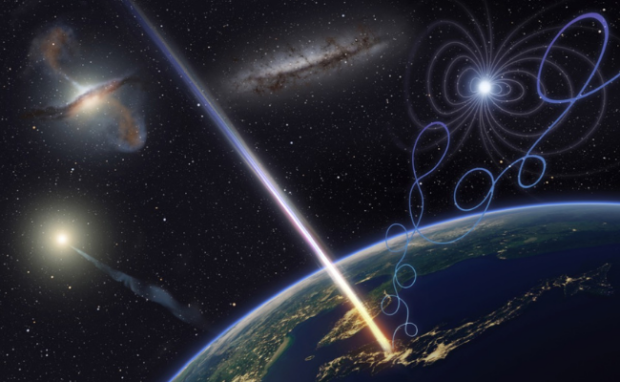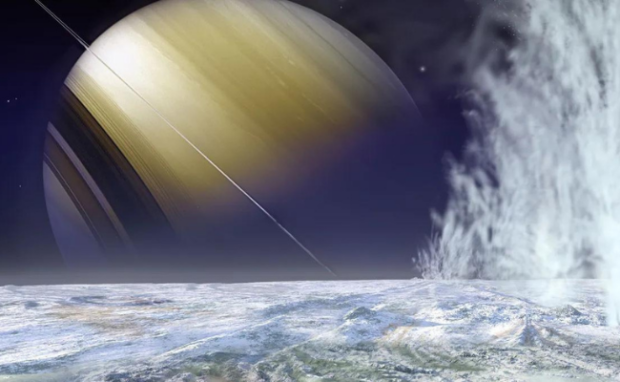Amaterasu: Powerful space particle falls to Earth
A mysterious outer space particle fell to Earth, and it’s the most energetic cosmic ray detected since 1991. That was when the most energetic cosmic ray ever seen which is the “Oh-My-God” particle. Consequently, the researchers who discovered it called it the “Amaterasu particle,” named after the Japanese sun goddess.
NASA has been launching space exploration missions to learn more about our universe. Sometimes, outer space sends samples to Earth so that we can study those! The Amaterasu cosmic ray is particularly interesting because it came from an area that space experts did not anticipate. What could be the secrets this particle is holding?
This article will discuss what experts learned about the Amaterasu particle and its potential origins. Later, I will cover the other recent space phenomena.
What do we know about the Amaterasu particle?

Ars Technica said astronomers working on the Telescope Array experiment in Utah’s West Desert detected the ultra-high-energy-cosmic ray (UHECR). Let’s briefly define what a cosmic ray is before we cover the Amaterasu.
The website said cosmic rays are “highly energetic subatomic particles traveling through space near the speed of light. Each is an atomic nucleus comprised of protons and neutrons.
The strangest aspect of these otherworldly phenomena is that researchers don’t know where they originate. The most recent one discovered, the Amaterasu particle, had an energy of 2.4 x 1020eV.
Digital Trends says that it is a million times the energy of the particles from particle colliders. Also, that amount of energy makes the Amaterasu particle the second most powerful cosmic ray ever detected.
Cosmic rays are mostly harmless to humans. “If you hold out your hand, one (cosmic ray) goes through the palm of your hand every second, but those are really low-energy things,” study co-author John Matthews said.
However, we still do not know where cosmic rays originate, so researchers have only speculated on their source. “The particles are so high energy, they shouldn’t be affected by galactic and extra-galactic magnetic fields. You should be able to point to where they come from in the sky,” Matthews said.
You may also like: Chinese space telescope will outperform Hubble
Massive phenomena like supernovas aren’t powerful enough to produce them. Also, the Amaterasu seemed to come from an empty area of the Milky Way galaxy called the Local Void.
These events seem like they’re coming from completely different places in the sky. It’s not like there’s one mysterious source,” said another of the researchers, John Belz.
“It could be defects in the structure of spacetime, colliding cosmic strings. I mean, I’m just spit-balling crazy ideas that people are coming up with because there’s not a conventional explanation.”
Other recent space phenomena

Astronomers aren’t the only ones perplexed by outer space phenomena. Believe it or not, it would seem outer space is also wondering about these objects!
In August 2023, NASA’s James Webb Space Telescope discovered a question-mark-shaped figure in outer space. Space Telescope Science Institute (STScI) representatives told Space.com, “It’s probably a distant galaxy or potentially interacting galaxies (their interactions may have caused the distorted question mark shape).”
“This may be the first time we’ve seen this particular object. Additional follow-up would be required to figure out what it is with any certainty. Webb is showing us many new, distant galaxies – so there’s a lot of new science to be done!” the experts added.
“The two distinct could easily be merging galaxies in the background, with the upper part of the question mark being part of a larger galaxy getting tidally disrupted.”
“Given the color of some of the other background galaxies, this doesn’t seem like the worst explanation. Despite how chaotic mergers are, double-lobed objects with lobed objects with curvy tails extending away from them are very typical.”
NASA’s Cassini spacecraft also found an essential building block of life on one of Saturn’s moons, Enceladus. It discovered high concentrations of sodium phosphates inside Enceladus’ ice grains.
That means this moon contains phosphorus, an essential building block of life. Dr. Fabian Klenner, one of the study’s co-authors, explained:
You may also like: Coin-sized spider robot can fit into tight spaces
“By determining such high phosphate concentrations readily available in Enceladus’ ocean, we have now satisfied what is generally considered one of the strictest requirements in establishing whether celestial bodies are habitable.”
Lead study author Dr. Frank Postberg noted, “The important part for habitability is that we found phosphates that have been dissolved in Enceladus’ ocean and, with that, are readily available for the formation of potential life.”
“In most cases, phosphates (on Earth and elsewhere in the solar system) are locked up in rocky minerals, but on Enceladus, they are dissolved in large quantities (as salts) in the ocean.” Also, Dr. Postberg said he and his team modeled Enceladus’ salty ocean to estimate its phosphate concentrations.
Conclusion
The Telescope Array experiment in Utah’s West Desert discovered the second most powerful cosmic ray to hit the Earth. As a result, astronomers are now more interested in studying the Amaterasu particle and similar phenomena.
Digital Trends said the Amaterasu researchers want to discover a potential source of cosmic rays with new facilities like an expanded Telescope Array. “It’s a real mystery,” said Belz.
Learn more about the Amaterasu particle in its published paper on the Science website. Also, check out the latest digital tips and trends at Inquirer Tech.